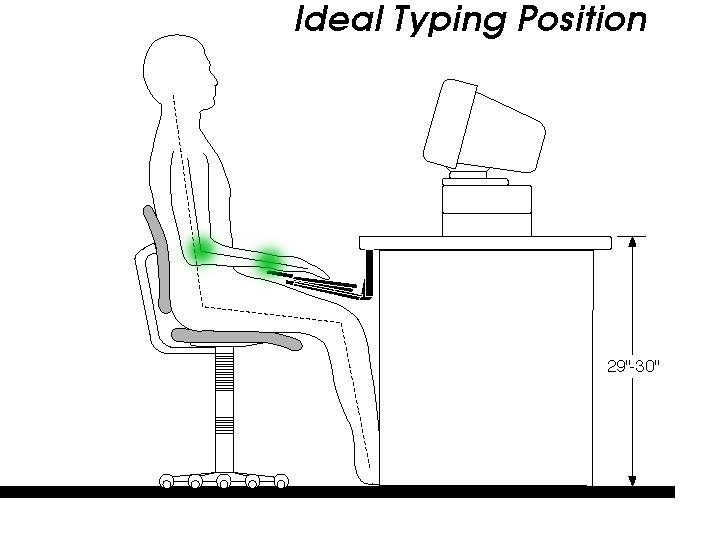Ergonomic keyboards
Introduction
I want you to sit or stand. Now, hold your left arm up with your right arm (like you're aiming an arm cannon on your left arm), and relax your left arm as much as possible.
If you followed the instructions correctly, your left hand should hang limp, slightly downward. In order to raise your left hand, you have to strain your left wrist just a little bit. In ergonomics, you call this extension.
Ergonomic typing posture
The above exercise demonstrates the hand under minimal strain hangs downward, and raising it requires some strain. As you can imagine, “repeated extremes of wrist extension [over long periods of time] can put excessive pressure on … the carpal tunnel of the wrist, and this impairs nerve function and eventually results in injury [such as Carpal Tunnel Syndrome]."
It also extends (ha, get it?) that the most ergonomic typing posture lets the hands hang slightly downward:

Anti-ergonomic products
So knowing you ergonomically should tilt your keyboard down (negative tilt), I find it baffling that so many “ergonomic” keyboards and stands tilt up (positive tilt).1 Even my current laptop's case supports tilting up, not down! In principle, I wouldn't call such products “ergonomic.” Instead, I'd refer to them as “anti-ergonomic.” Tilting up leads to more extreme extension, exacerbating wrist problems.
So why do so many anti-ergonomic products exist? To me, it comes down to false intuition. So many workers spend so much time working with computers, so suffer from or at least worry about repetitive strain injury. Negative tilt intuitively seems wrong (at least to me, before researching this topic), and positive tilt looks sort of cool, so let's buy positive tilt!
Conclusion
The same Department of Design and Environmental Analysis at Cornell University provides a handy guide to an ergonomic computer setup. Of note, if you really care about overall ergonomics, perhaps a good chair serves as the best “ergonomic keyboard.”
As the Wirecutter review on ergonomic keyboards (which also references Alan Hedge, Professor Emeritus in the Department of Design and Environmental Analysis, Cornell University) reports: “[a]s for the little feet that most keyboards have in the rear, which raise the back edge of the keyboard to tilt it like an old typewriter, well, don’t use those.” ↩︎